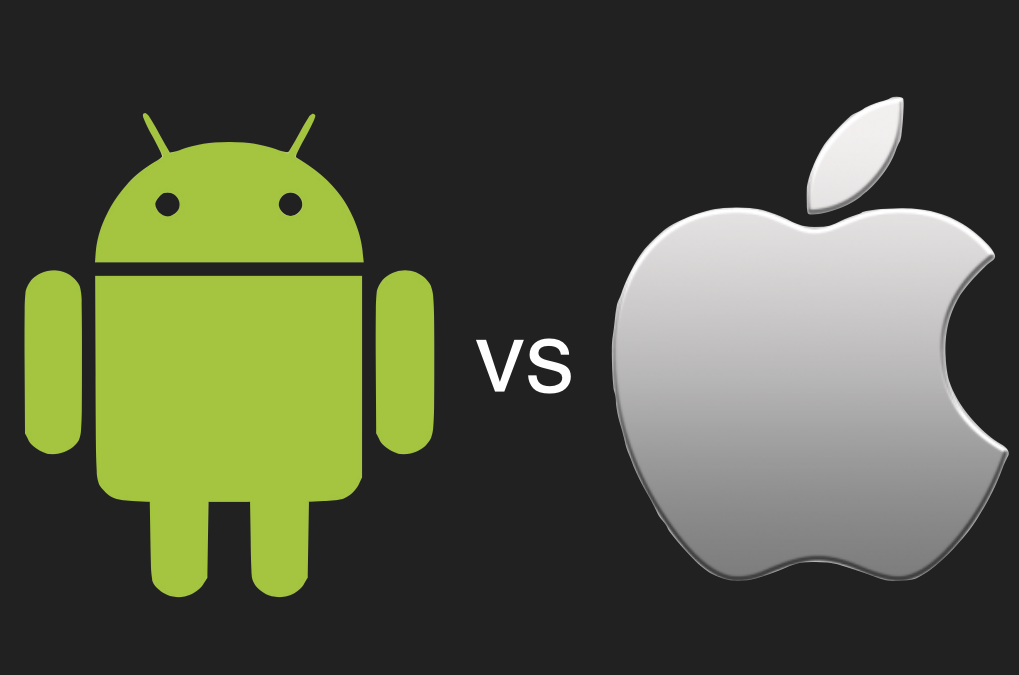Mobile apps have quickly become a tool consumers use to engage with brands and services they love. Have an idea for a mobile app? Interested in the growth of the mobile app market? Below we share details about the mobile app market and questions that should be considered and answered prior to mobile app development.
There Are Over 3.97 Million Published Mobile Apps
According to research done by Statista, a leading online statistics company of over 200 statisticians, database experts, analysts, and editors, as of July 2015 there were a total of 3.97 million published mobile apps with the number one mobile app platform being Android, closely followed by iOS.
Published mobile apps in July of 2015:
- 1.6 million Android mobile apps in the Google Play Store
- 1.5 million iOS mobile apps in the Apple App Store
- 400,00 mobile apps in the Amazon AppStore
- 340,000 mobile app in the Windows AppStore
- 130,000 mobile app in Blackberry World
More Than Half of all Searches Are Being Made on Mobile Devices
Last year Amit Singhal, senior vice president of search for Google, announced that for the first time ever more than half of all searches are being made from mobile devices. This data reflects consumer validation of mobile as a value add everyday tool.
Mobile Commerce Grew 38.7% from 2014 to 2015
According to Internet Retailer, a media company that focuses on business intelligence for e-commerce companies, mobile commerce grew 38.7% from 2014. Internet Retailer’s data shows that of the top 2016 Mobile 500 retailers 180 of them have mobile commerce apps and their growth rate exceeds the general growth rate of mobile commerce; growing at 44% from 2014 to 2015, generating $40.58 billion in sales.
The mobile app market growth rate and the growth rate of mobile commerce retail revenue remind established, and new companies, that they must consider a mobile app development strategy.
10 Questions to Ask Yourself Prior to Starting Mobile App Development
MagmaLabs develops mobile apps for Business to Business (B2B), Business to Consumer (B2C), Business to Enterprise (B2E), Business to Government (B2G), Consumer to Business (C2B), and Consumer to Consumer (C2C). Pulling from team expertise we’ve complied a list of questions we recommend anyone considering mobile app development should ask themselves prior to starting app development.
1. Why build the app?
At MagmaLabs we believe in starting with “Why?”. Asking the question “Why does this app need to be built?” seems like an obvious step yet it’s a step that is commonly overlooked. When asking yourself “Why does this app need to be built?” really dive into understanding what problem you seek to solve, how big the problem really is, and how the app solves the problem.
2. Does the app I want to build already exist?
Once you understand the need for the app you want to build (i.e. the “Why”) now ask yourself “Does the app already exist?”. Perform competitive landscape research to understand how many apps already provide a similar value proposition. Download the apps that exist and discover what they do well and what they don’t do well. Use tools like CrunchBase and Mattermark to learn about the teams behind the competitive apps, how much funding they have, if they have received any press, and what the user response has been to the app (via comments to news articles and app reviews).
3. Who is my target audience?
Prior to building a mobile app the question “Who will use the app?” (i.e. who is the target audience) needs to be answered. This question seems like an easy one to answer but it is much more complex than it seems. For example, let’s say you are building an app for a children’s clothing subscription business. Your target audience will be parents. However, most of the household shopping is done by mothers so your target audience is really mothers. Large research companies like Forrester research can help you determine the market size of “mothers”. This is Step 1 to understanding your target audience; using the reports of established third-party market research companies to determine market size.
A common mistake made by first time mobile app companies is to make the assumption that the market size number reported by third-party companies like Forrester is the target audience. This is not the case. The target audience is the number of people who could actually become customers (also referred to as the total addressable market). Using the third-party reporting data and an understanding of who the customer is and how they engage with the mobile app is Step 2 to understanding your target audience.
In our example, “mothers” are the target market. In order to understand the total addressable market one needs to understand ‘How many mothers buy clothing for their children online?’, ‘What is the demographic profile of these mothers (i.e. age, income, spend, likes, mobile device type, etc.)?’, ‘How many times a year do mothers make a purchase of children’s clothing online?’, and ‘What is the total value of their purchases of children’s clothing online?’.
Answering the granular target audience questions above will help create a tangible target audience number while also providing qualitative data that can help to acquire customers.
4. Should I build iOS or Android first?
Using target audience insights, an understanding of what apps already exist, and looking at what platform the most successful apps are built on, a clear assumption can be made as to what should be developed first, iOS or Android. In the case more data is needed to make a decision analytics tools like Quantcast and Alexa provide data on what mobile devices users of competitor companies are use. This data can be used to help determine what platform the mobile app should be developed in first.
5. What is the user experience (UX)?
When developing any product it is important to clearly think about the user experience (UX). The UX of an app is how the user engages with the “Why” , receives value, and activates. Using our previous example of a subscription clothing site for children the user experience could be the following:
- Discovering a review of the app on a mommy blog
- Being directed to the app store (mobile and desktop)
- Accessing information about the app’s the value proposition (i.e. the “Why”)
- Deciding to install the app
- Completing a preliminary registration process
- Browsing the shopping catalog
- Activating the children’s clothing subscription
- Receiving an order confirmation
- Receiving emails about promotions
It is very unlikely that any one person is going to complete all the steps above in one sitting. Nonetheless the UX details how someone engages with the “Why”. A well thought out UX results in high engagement and high conversion rates.
6. What data will drive the success of my app?
Core metrics for any company include: customer acquisition, customer engagement, customer activation, customer retention, and customer referral. Using insights from the assumed UX it’s easy to outline and measure the data needed to ensure the app developed grows and has a foundation for success. If we look at our children’s subscription clothing app example early success metrics to watch and measure include:
-
What is the conversion rate of app downloads/ installs
(How many people install the app?) -
What is the conversion rate of starting the app
(How many people start the app?) -
What is the conversion rate of registration completion
(How many people are engaged with the service?) -
What is the average engagement time?
(How many people engage with the app monthly? How many new users? How many repeat users?) -
What is the rate of uninstall/ removal of the app
(How many people uninstall the app?) -
What is the customer activation rate?
(How many people may a purchase?) -
What is the rate of customer retention?
(How many people continue with the subscription?)
7. What is my business model?
Mobile apps may be built as a marketing strategy for an existing business while other mobile apps built to “be the business” and generate revenue. Prior to beginning the develop of a mobile app it is important to think about the business model and the expected return-on-investment (ROI).
8. What are my phases for success?
Every new mobile app has phases for success. Phases for success are determined by the business model. Within each phase assumptions are made, tested, learned from, and help move the product roadmap and customer acquisition roadmap forward.
Using our children’s subscription clothing example high-level phases for success include:
- Alpha, testing with very early adopters invested in the success of the app to determine the “Why” is important
- Beta, testing with early adopters that like the value prop and engage with the “Why”
- Launch, releasing the app to the entire market, measuring key metrics around the solution built
- Growth, knowing the solution works, understanding where target audiences are, the ability to acquire target audiences, the ability to repeatedly convert target audiences value, and the ability to retain target audiences
Think about the business model of your mobile app to determine what phases, and milestones, it has to go through in order to be successful.
9. What security concerns should I consider?
When developing a mobile app (or any product/ technology) it is important to thoughtfully think about security risks and to proactively address them. If the mobile app you’re developing requires registration then you’ll want to address password protection/ encryption. If the mobile app you’re developing includes taking a payment then you need to address the ability to take payments securely, avoid fraudulent purchases, and avoid the theft of payment information. Outlining security concerns and walking through a process to address each issue will ensure the mobile app developed has a higher chance of success.
10. Should I built the app myself or hire someone to build my app?
Based on your technical capabilities as well as the qualitative and quantitative data collected via the answering the the previous nine questions it should be pretty easy to determine whether you can build the mobile app yourself, if you should hire someone to build the mobile app, or if you should work collaboratively with someone else to build the mobile app. Every mobile app has its own development path no one path is better than the other.
Get Started
There is no time like the present to get started on the development of your mobile app. App building is fun. Mobile apps can provide meaningful business solutions and can positively impact the world. Next time, prior to beginning to the development of a mobile app, ask yourself the 10 questions above. Answering the questions above will save development time, save money, create a more enjoyable building process, and will increase the chances that your mobile app is a success.







